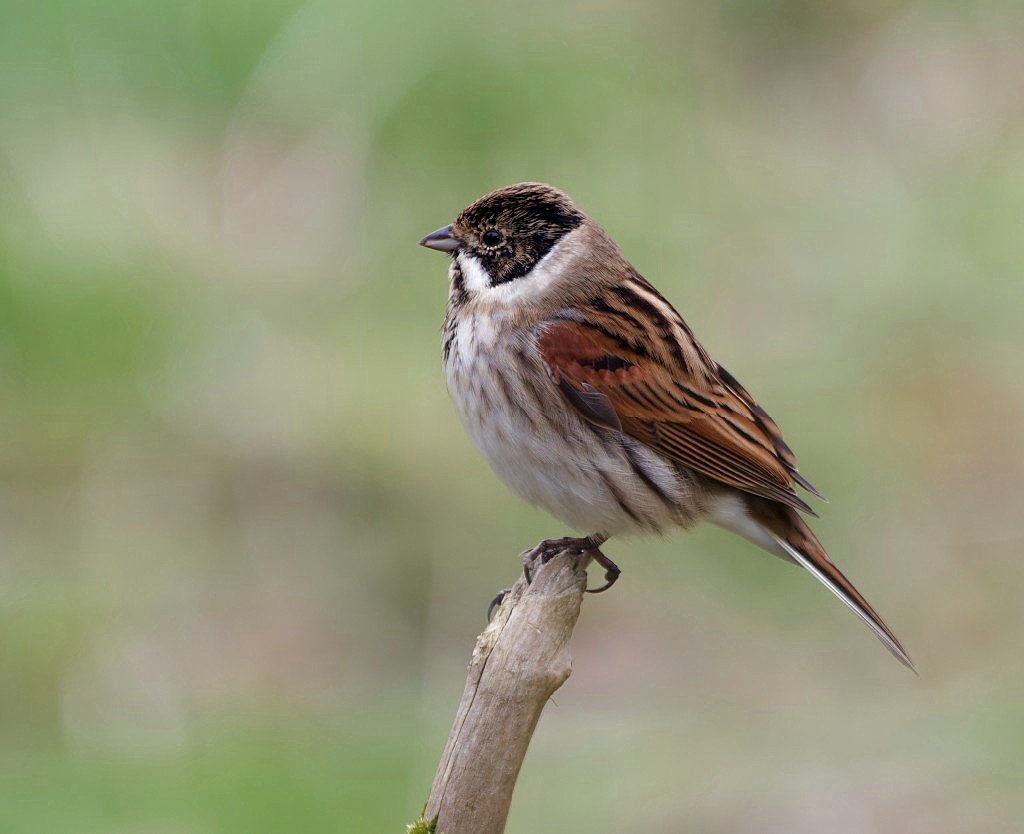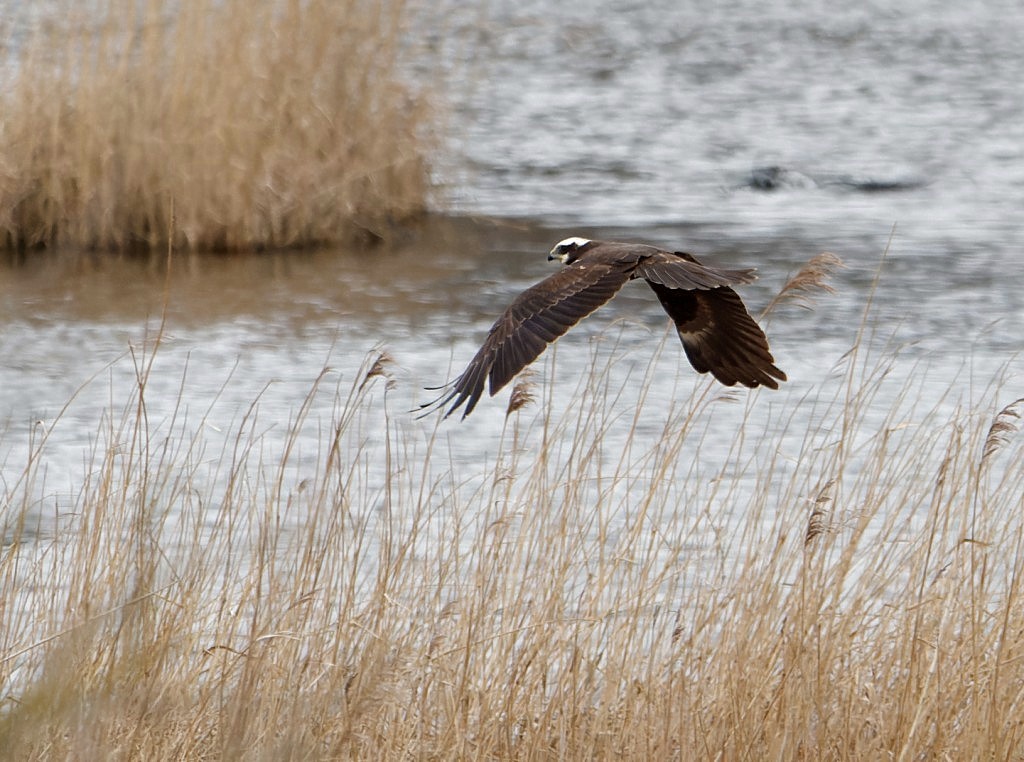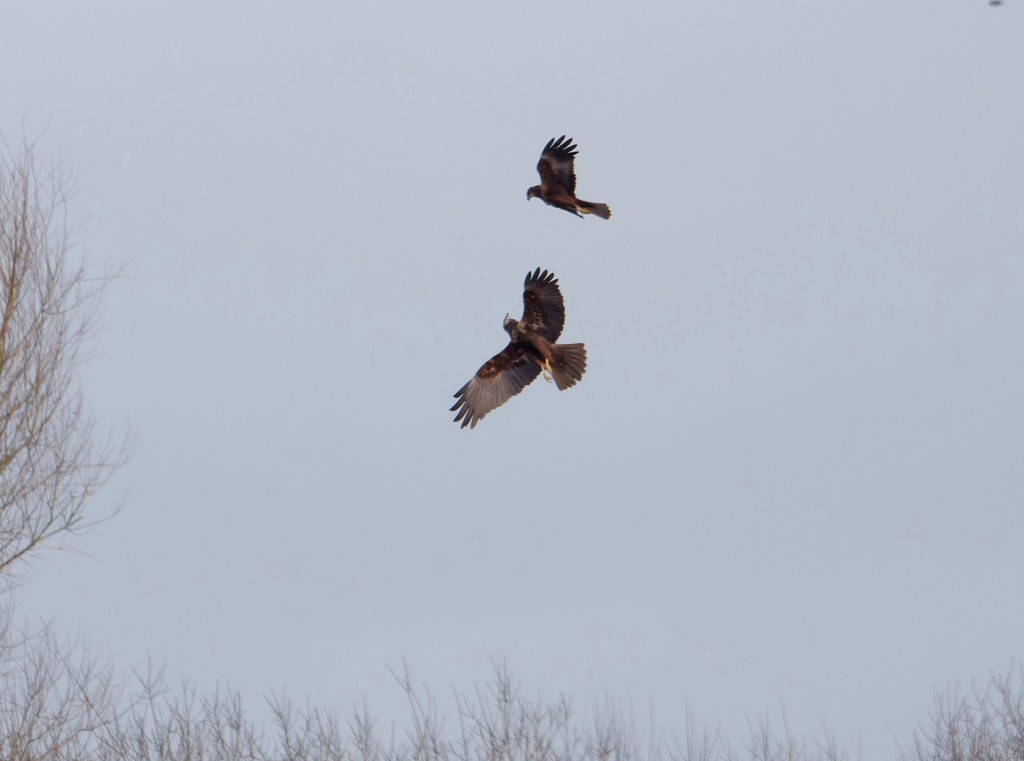Woolston Eyes Monthly Sightings
2024-02-20
The exceptionally mild spell has triggered some very early migration, making for a really interesting week or so. The highlight of the period was undoubtedly the Lesser Scaup, first found on the 10th before turning up again on No.3 bed on the 18th and then later settling on the Weir Basin to give good views to a number of visiting birders. Almost as surprising was the arrival of a Little Ringed Plover, in company with two Ringed Plovers, on flooded fields across the Ship Canal from Bollin Point on the 16th. This is, by some distance, our earliest ever record of a returning Little Ringed Plover and it may have been one of the first to arrive nationally. A further early arrival then followed, with a Black-necked Grebe on No.3 bed yesterday. While not unprecedented for us, this is still a very early return date, with mid-March being more typical. This morning, though still mild, delivered more standard fare, with highlights of 3 Stonechats, 3 Bramblings, 1 Redshank, 3 Oystercatchers and 270 Black-headed Gulls back at the breeding colonies. The link is to a video showing a few of the pairing wildfowl and some interaction between the pair of Marsh Harriers which have been displaying most days on No.3 bed. https://youtu.be/_xS1NEq1cTo Cheers David Bowman
Submitted by: David Bowman
2024-02-17
It felt like spring had arrived this morning, with warm sunshine and the arrival back at the No.3 bed breeding colony of 75 raucous Black-headed Gulls. A pair each of Marsh Harriers and Buzzards were displaying over the bed and a couple of Oystercatchers dropped onto the gull nesting rafts before I had to set off to meet our contractor on No.1 bed. He is making rapid progress with both the pond clearance and coppicing in the Viaduct Pools area and it was pleasing to hear a Willow Tit already in song from the coppiced area. Then I walked the length of the Ship Canal as far as Bollin Point, looking for what may yet turn out to be the bird of the year. During Saturday’s WeBS count one of our counters had had distant views of what was thought to be a Scaup. Later on, after reviewing photos of the bird, it became clear that it was a Lesser Scaup, a much rarer bird and a first record for the Reserve. While the former breed in the far north of Fenno-Scandia, winter around the coast of the UK and occasionally turn up inland, the latter are a true vagrant from North America, with less than ten having ever been recorded in Cheshire and the Wirral. As it turned out, I didn’t relocate it but there’s every chance it’ll turn up again, having been seen in the week at Rixton Claypits. The spring-like mood was continued, though, with a nice movement of Curlews, a relatively scarce bird at Woolston. Eleven were feeding on flooded fields across the Canal from Bollin Point, later joined by two more, while five more were reported passing over No.3 bed. Photo of a Buzzard Cheers David Bowman
Submitted by: David Bowman
2024-02-13
It’s been a busy week, meeting with RSPB colleagues to review progress with our various habitat management tasks and completing the monthly Wetland Birds Survey (WeBS). In between, the usual monitoring of birds and other wildlife has carried on, With spring just a touch away, Toads have been on the move, heading to their many breeding pools. Part of our Willow Tit Recovery Project involves opening up a number of amphibian breeding pools which had become heavily overgrown. This should help to maintain the Reserve’s exceptional numbers of breeding amphibians, which include Great Crested Newts and Smooth Newts as well as Common Frogs and Toads. The birding highlights included 3 singing Willow Tits on No.3 bed, a Dunlin unexpectedly on No.4 bed, a Scaup on the Ship Canal and a steady eastward movement of Redwings, including 160 moving through No.3 bed today. At least two pairs of Marsh Harriers are also present, with display observed over No.3 bed and we remain hopeful that we can add to our regular breeding pair this year. Photo of a Reed Bunting Cheers David Bowman
Submitted by: David Bowman
2024-02-03
It was a cool dawn, with a squall moving over before the day warmed and the sun broke through. Three Marsh Harriers came out of roosts on Bed 3 early on, two young males and an adult female, with one of the males snatching a small bird from out of the reed-bed. The slow transition towards spring continues, with the first five Great Crested Grebes returning to the bed ahead of the breeding season, along with 29 Pochard, between Beds 3 and 4. These are probably the first tranche of our returning breeding population, which is of national importance and peaked at a record 40 broods last year, showing the positive impact of the extensive new wetland on Bed 4. As ever, a couple of Oystercatchers were the first waders of the season to arrive, if we don’t count Lapwings. They are a species which regularly threatens to breed with us but never quite seems to deliver - maybe this year? The two Chiffchaffs on the bed are clearly wintering birds, as our migrants don’t usually arrive till March, the month which also delivers our first Black-necked Grebes and Sand Martins. As a timely reminder that winter is far from over, two Goldeneye were on Bed 4. We might yet see another cold snap before the month is over! Photo of a 2nd calendar-year male Marsh Harrier Cheers David Bowman (with Dan Owen, Helen Wynn, Brian Baird and Brian Martin)
Submitted by: David Bowman
2024-02-01
Skies were clear early on this morning, with the good weather triggering a lot of pre-breeding activity on No.3 bed. As well as our commoner resident species, it was good to hear three Willow Tits in song from around the bed. After a couple of poor years for this rapidly declining tit, it’s fingers crossed for a better breeding season this year. Interestingly, last Saturday our No.3 bed ringing team caught an adult female Willow Tit, which was already an adult when ringed at Elton Reservoir, near Bury, in 2022. She was re-trapped several more times in the spring of 2023 before seeming to disappear, presumably failing to find a mate. As Willow Tits rarely move more than five miles or so, which is one of the many factors contributing to their decline, it would be good if she could breed this year and add variety to our gene pool. Of equal interest was the raptor activity, with two pairs of Buzzards, a pair of Sparrowhawks and two pairs of Marsh Harrier all in soaring display flights. The latter are intriguing as the Reserve already holds a regular breeding pair of these attractive harriers but as they will happily breed in loose colonies, defending only the immediate vicinity of the nest, it would be good to see our population grow. Record shot of one of the displaying pairs of Marsh Harrier Cheers David Bowman
Submitted by: David Bowman




